When planning an adventure in Japan, the 2D1N climb of Mt. Fuji stands out as a must-do experience. With an English-speaking guide, climbers of all backgrounds can tackle this iconic peak with ease. They’ll enjoy a comfortable stay at a hut on the 8th Station, camaraderie with fellow trekkers, and the thrill of witnessing a dazzling sunrise from the summit. But what should you pack for this unforgettable journey? And what local customs should you keep in mind? The answers might surprise you as you prepare for this exhilarating trek.
This experience made our list of the 12 Best 2 Day Tours In Tokyo.
Activity Overview and Pricing
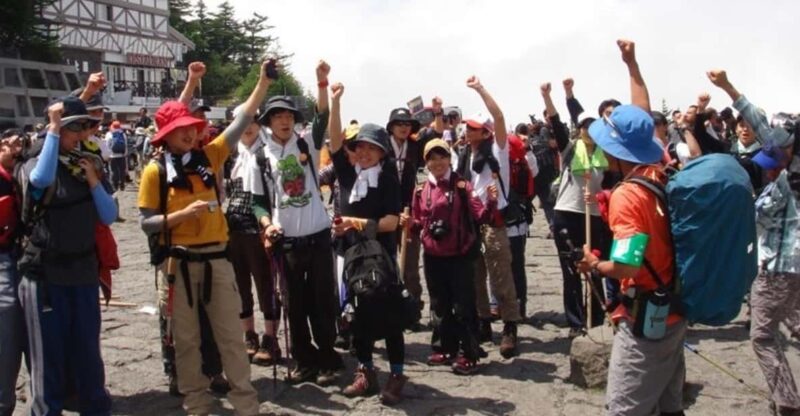
If you’re looking for an unforgettable adventure, climbing Mt. Fuji shouldn’t be missed. This two-day, one-night journey offers a chance to tackle Japan’s highest peak with the guidance of an English-speaking local.
Priced from $360.20 per person, it’s an experience that balances excitement with accessibility. You can reserve your spot without upfront payment and enjoy a full refund if you cancel 24 hours in advance. This flexibility makes it easier to plan your trip without the usual pressure.
The itinerary includes everything from the initial trek to the 5th Station to a night at a local hut, setting you up for an epic summit push.
You can check availability for your dates here:Climbing Experience and Highlights

After securing your spot for the Mt. Fuji climb, adventurers can expect an unforgettable experience. Led by certified local guides, they’ll trek Japan’s highest mountain, resting in a cozy hut at the 8th Station. One of the highlights? Catching the stunning sunrise from the summit, and don’t forget to grab that coveted summit certificate! For those seeking a little extra, an optional guided tour around the crater is available.
| Highlight | Description |
|---|---|
| Local Guides | Experienced Mt. Fuji-certified guides |
| Accommodation | Comfortable local hut at the 8th Station |
| Sunrise View | Breathtaking sunrise at the summit |
| Summit Certificate | Proof of your achievement |
| Optional Crater Tour | Guided 90-minute walk for an extra fee |
This climb’s packed with adventure and memories!
You can also read our reviews of more guided tours in Tokyo
Itinerary and Safety Information
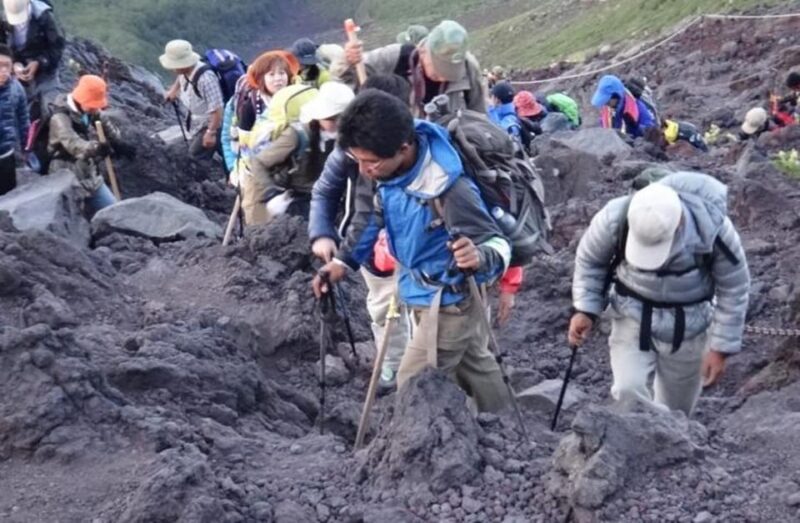
Initiating on the Mt. Fuji adventure, participants kick things off with a departure from Yokohama, Tokyo, or Shinjuku, heading straight to the 5th Station.
After a self-catered lunch, they’ll tackle the Yoshida Trail, making their way up to the 6th and 7th Stations.
As night falls, the ascent to the summit begins, and it’s all about catching that breathtaking sunrise.
Once back down, a relaxing soak in a hot spring awaits.
Safety’s a top priority here; weather can be unpredictable, so cancellations might happen.
It’s essential for climbers to have proper hiking gear, and if they don’t, rentals are available at an extra charge.
It’s an unforgettable experience wrapped in safety and adventure!
Participant Requirements and Restrictions
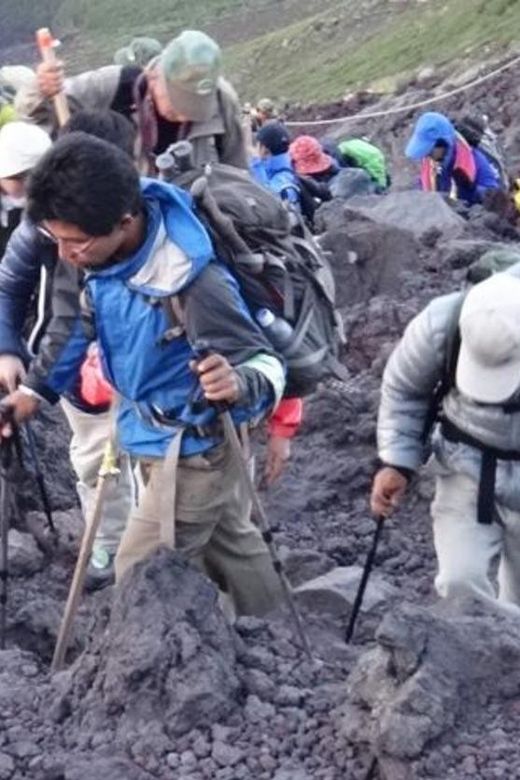
Climbing Mt. Fuji isn’t just a walk in the park; it comes with some important participant requirements.
First off, adventurers need to be between 6 and 70 years old. Sorry, but kids under 6, pregnant women, and folks with mobility impairments or serious health issues like heart or respiratory problems won’t be able to join the fun.
When booking, participants must provide their passport names in English, so keep that handy! Each guide takes care of 20 to 25 climbers, ensuring a safe adventure.
It’s crucial to assess your fitness level before signing up, as this climb can be challenging.
Ready to tackle Mt. Fuji? Make sure you meet these guidelines before lacing up those hiking boots!
What to Bring
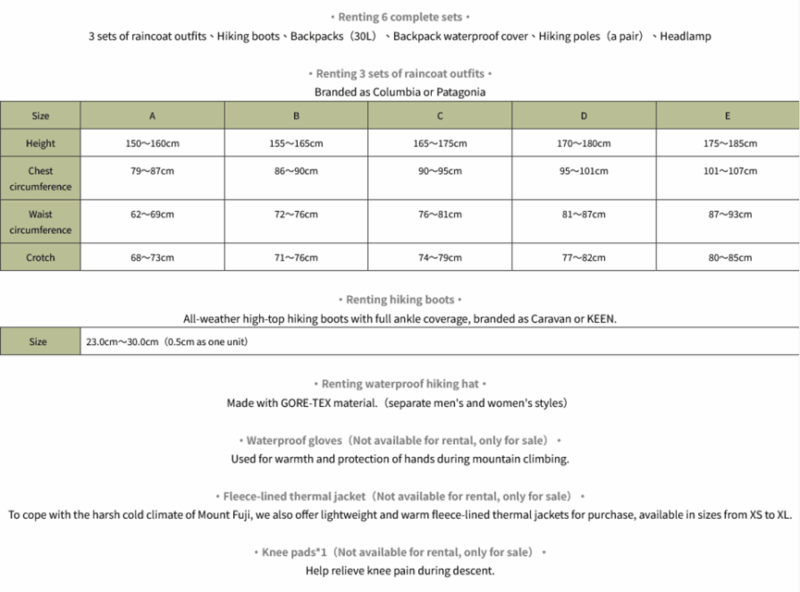
When gearing up for an adventure like climbing Mt. Fuji, it’s crucial to pack wisely. Participants should bring the right gear to guarantee a smooth experience. Here’s a quick checklist:
| Must-Haves | Don’t Bring |
|---|---|
| Sturdy hiking shoes | Alcohol |
| Plenty of water | Drugs |
| Comfortable clothing | Slippers or bare feet |
| Cash for snacks & amenities |
With the right items, climbers can focus on the breathtaking views rather than discomfort. Remember, it’s all about enjoying the journey! Also, be respectful of local customs and guidelines, and consider bringing travel insurance for peace of mind. Happy climbing!
More Great Tours NearbyAccommodation Details
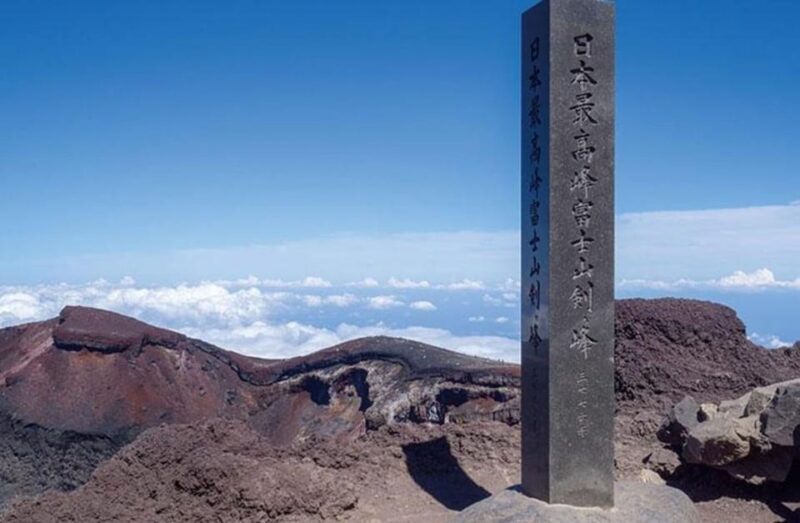
After packing the right gear, it’s time to contemplate where climbers will rest during their Mt. Fuji adventure.
They’ll spend the night in a cozy, mixed dormitory-style mountain hut located at the 8th Station. This spot not only offers shelter but also a chance to meet fellow adventurers. While it’s basic, it’s all part of the experience!
Climbers should bring their own amenities, as the hut mightn’t provide everything they need. Plus, there are coin lockers at the 5th Station to store any extra luggage.
It’s a unique opportunity to recharge before tackling the summit, making those stunning sunrise views even more rewarding when they finally reach the top!
You can also read our reviews of more tours and experiences in Tokyo
- Fukushima Daiichi Nuclear Power Plant Visit 2 Day Tour From Tokyo
- 2-Day World Heritage Mt. Fuji Sunrise Climbing Tour From Tokyo
- Hakone Private Two Day Tour From Tokyo With Overnight Stay in Ryokan
- 2-Day Private Tokyo MT Fuji and Hakone Tour With Guide
- Tokyo & Fuji: Premium Car 2-Day Private Tour
- Tokyo: 2-Day Tour Tokyo With Mt. Fuji and Hakone Day Trip
Local Customs and Guidelines
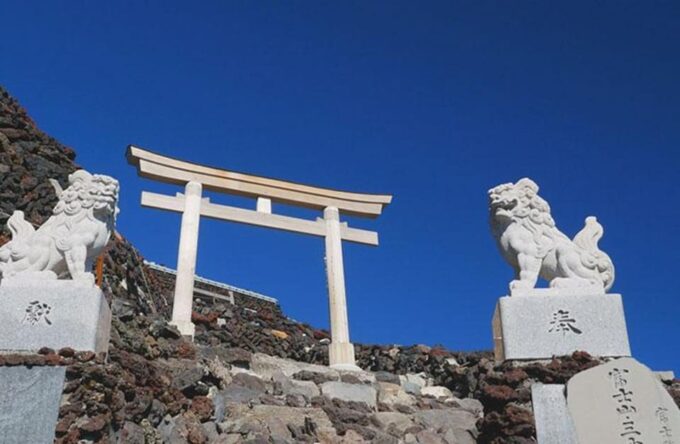
Respecting local customs and guidelines is key to having a smooth and enjoyable experience while climbing Mt. Fuji.
For starters, hikers should dress appropriately and avoid wearing slippers or going barefoot. It’s also important to steer clear of alcohol and drugs, as they’re not allowed during the climb.
Some hot springs may restrict access for individuals with tattoos, so it’s worth checking in advance. Remember, this isn’t just a hike; it’s a cultural experience!
Being polite and courteous to fellow climbers and guides goes a long way.
Travel Insurance Options
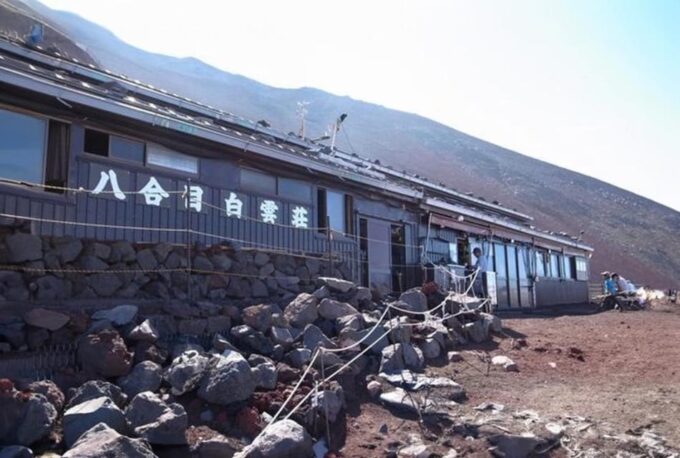
Planning a climb up Mt. Fuji? Travel insurance is a smart move. It covers unexpected events, like trip cancellations or medical emergencies, ensuring peace of mind while tackling Japan’s highest peak.
Many providers offer policies tailored for adventure activities, which can include coverage for altitude sickness or accidents during the climb. Participants should look for plans that cover emergency medical evacuation and repatriation, just in case.
Plus, some might even cover gear loss or theft. It’s important to read the fine print and understand what’s included. While basic car insurance comes with the tour, investing in personal travel insurance is always a good idea.
A little preparation can save a lot of stress!
Frequently Asked Questions

What Is the Best Time of Year to Climb Mt. Fuji?
The best time to climb Mt. Fuji is during the official climbing season, which runs from early July to early September. During these months, the weather’s milder, trails are open, and facilities are available.
Are There Age-Specific Training or Fitness Recommendations for Participants?
When considering age-specific training or fitness, it’s vital for participants aged 6 to 70 to be in good shape. Regular hiking and stamina-building exercises can help guarantee everyone enjoys the climb safely and comfortably.
Can I Bring My Own Food During the Climb?
He can definitely bring his own food while climbing. It’s a great way to stay fueled! Just remember to pack light and keep it easy to eat, since space is limited on the trail.
What Happens if I Can’t Reach the Summit?
If someone can’t reach the summit, they’ll still enjoy breathtaking views and a unique experience. Guides guarantee everyone’s safety, so participants can descend at any point, prioritizing well-being over reaching the top.
Are There Restroom Facilities Available During the Climb?
During the climb, restroom facilities are available at various stations. They’re not luxurious, but they do the job. Climbers should be prepared for limited access, especially during busy times. It’s all part of the adventure!
Recap
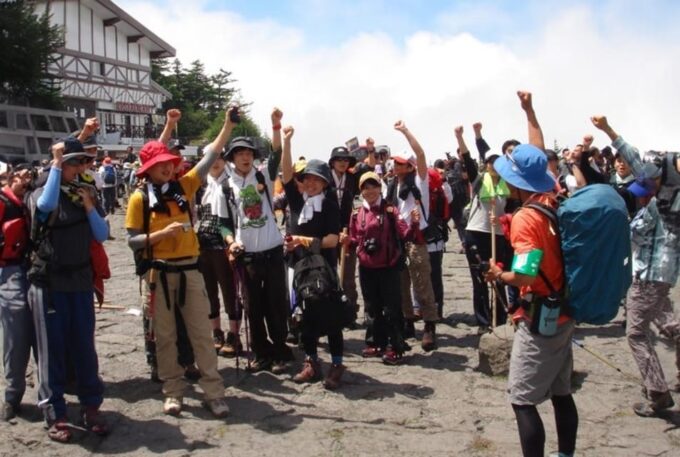
So, if you’re itching for a memorable adventure, the 2D1N Climb Mt. Fuji is a fantastic choice! With stunning views, a friendly English-speaking guide, and a chance to connect with other climbers, it’s an experience you won’t want to miss. Plus, you’ll get to witness an unforgettable sunrise from the summit! Just pack your essentials, follow the guidelines, and get ready for an epic journey up Japan’s iconic peak. Happy climbing!
You can check availability for your dates here:More 2-Day Experiences in Tokyo
- Guided 2 Days Mt. Fuji and Hakone Tour GREEN NUMBER PLATES
- 2 Days Tokyo Highlights Private Tour Budget Friendly With Guide
- 2 Days Private Luxury Zen Tour Temple Stay
- 2 Day Kyoto and Nara Tour From Tokyo
- 2-Day Private Tokyo MT Fuji Hakone Sightseeing Tour With Guide
- 2 Day Package Tour Including Haneda Airport Pickup
More Guided Tours in Tokyo
- Tokyo 6 Hr Private Guided Tour & Rickshaw Experience
- Barrier Free Transportation in Hakone, No Guide (Tokyo Dep.)
- Tokyo 7hr Private Guided Tour & Sushi Roll Making Experience
- Learnig History of Tokyo in Depth With a Certified Tour Guide
- Mount Fuji Five Lakes Tour From Tokyo With Guide & Vehicle
- Guided Japanesefood Tour in Shibuya(Tokyo)
More Tour Reviews in Tokyo
- Tokyo Traditional Food Tour in a Small Group
- Private 1 Day Tour to Nikko: Onsen, UNESCO Shrines and Nature
- Tokyo 6 Hr Private Guided Tour & Rickshaw Experience
- Private Breakfast Tour at Tsukiji Outer Market
- Japan Autumn & Winter Illuminations Discovery Tour (12 Days)
- Old and New Tokyo Full Day Private Tour
Not for you? Here's more nearby things to do in Tokyo we have reviewed
- Tokyo Traditional Food Tour in a Small Group
- Private 1 Day Tour to Nikko: Onsen, UNESCO Shrines and Nature
- Tokyo 6 Hr Private Guided Tour & Rickshaw Experience
- Private Beginner Japanese Cooking Class Near Tokyo
- Private Breakfast Tour at Tsukiji Outer Market
- Japan Autumn & Winter Illuminations Discovery Tour (12 Days)
- Old and New Tokyo Full Day Private Tour
- 【Private】Sushi & Ramen Cooking & Sake Set in Tokyo!(+Recipe)
- Private 1 Day Tour to Kamakura: Sea, Temples, and Coastal Scenery
- Tokyo Castle & Imperial Palace , Historical Walking Tour
- One Way Shuttle Van Transfer, Tokyo⇔Hakone Area
- Barrier Free Transportation in Hakone, No Guide (Tokyo Dep.)
